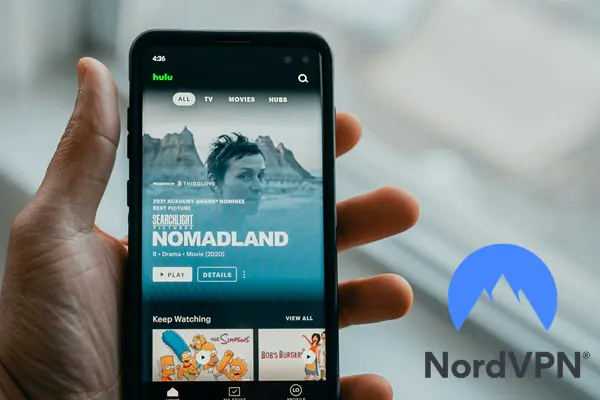Catfish Finder | 8 Ways to Find out If Someone Is a Catfish

📌 TL;DR:
Modern catfishers are more skilled at hiding their tracks, so it’s better to use multiple means to verify with different pieces of info you have.
- Reverse image search: Upload their images to pro tools like Social Catfish or FaceCheck.ID to find duplicates or matches.
- Phone number lookup: Reverse their number with tools like BeenVerified to uncover details about the owner.
- IP address clues: Sometimes IP addresses may provide location insights.
- Email & username search: Search their email or username to find connected accounts.
- 4 other little tricks: Small tricks can sometimes reveal big clues.
According to a 2022 survey:
Nearly 1 in 4 people believe they’ve either encountered a potential catfish or know someone who has.
Source: www.statista.com
Well, it’s the Internet—it’s easy for anyone to hide behind a fake persona. That’s why we can see countless cases and stories of people being deceived online. If you’ve also met someone online and everything seems great, but something feels off, you’re not alone. It’s only natural to wonder: Is the person on the other end genuine, or are they just another catfish?
Whether it’s for dating, random online connections, or just trying to help a friend avoid being scammed, this post gathers the most effective tips and tools to help you verify someone’s identity, even when the information you have is limited.
What is online catfishing? Why do people catfish?
Short definition: Catfishing involves creating a fake persona online to trick others, often on dating apps or popular social media platforms.
Why do people catfish?
The reasons can be varied. In a study published in 2022, it found that people that are more likely to catfish usually come with personalities like psychopathy, and narcissism. From those cases of catfish shared online, some people do it just for attention, for building fake relationships for validation, or for the thrill of playing a role to escape reality. Others, unfortunately, do it to manipulate or to scam people, especially for financial gain(a tactic often known as “pig butchering“).
Whatever the reason, the outcome is the same: someone’s getting hurt, and that’s not something you want to be part of.
How have catfishers become today?
Short answer: more sophisticated.
In the past, common catfish tactics included using low-res photos of ultra-glam models with poorly written English. Nowadays, however, catfishers are using advanced techs to help them make fake online personas more easily:
- They may use Photoshop or AI to place a model-like figure into local, real-world settings, making it harder to differentiate between a real person and a digitally altered image.
- With the rise of Deepfake technology and machine learning, it’s now possible for catfishers to utilize AI-powered chatbots that simulate human conversation. These bots can generate responses that sound shockingly natural.
Common red flags: spot the signs of potential a catfish
Every day, online communities and forums are filled with stories of people falling victim to catfishers and romantic scams. While these stories may seem like juicy gossip, they often highlight common patterns and warning signs that can help you spot a potential catfish before taking actions to verify.
Too much, too soon
If someone’s getting flirtatious or sending you overly sexual messages way too early in the conversation, that’s a red flag. Some of them may even ask you to send intimate photos for manipulation or blackmail afterwards.
(While some catfishers may take months to build trust, it’s still about manipulation in the end.)
Social media accounts that are too polished yet too new
If their photos look too polished, it could be a fake. Some catfishers particularly like to present themselves as good looking figures with big houses, nice cars, and high-paying jobs. Combined with that, the account may also seem brand new with hardly any followers. On Snapchat, for instance, if their score is low or they don’t have a Bitmoji, something might be off.
Money-related topics and requests
Those catfishers who aim for money may bring up financial trouble, urgent money needs, or propose “once-in-a-lifetime” investment opportunities to you.
They want to take the conversation off-platform soon after meeting each other
If you meet someone on a platform like Instagram or a dating app and they quickly push to move to WhatsApp or Telegram—be cautious. Scammers prefer platforms where their actions are harder to trace.
Weird language and grammar
Catfishers that are non-native speakers may use odd phrasing or awkward grammar.
Inconsistent stories
If they claim to be from your area but can’t answer basic local questions, or their stories just don’t add up, that’s a big red flag.
Refusal to verify their identity
If you ask for a video call, specific photos, or some other way to prove they’re real, they refuse or make excuses. This is a strong indicator that something isn’t right.
Ghosting, then coming back
If they suddenly disappear from your chats for a while and then reappear out of nowhere, it’s a classic move for someone trying to keep you on the hook.
So, you’ve spotted some red flags… what now? It’s time to do some some searching. Below are some effective ways to dig deeper and verify their identity based on the information you have.
1/ Using different image search tools
When you’re trying to figure out if someone’s account is the real deal, one of the direct and convenient ways is to start with their photos. You can use a bunch of online tools to cross-check their images and see if they match any profiles of celebrities, influencers, or other people. Alternatively, these tools can also help you learn more about someone you know online by simply analyzing their pictures.
💡 Since different online tools have varying capabilities for image recognition, it’s best not to rely on just one. We recommend using a combination of free image search tools from major search engines, as well as more sophisticated paid tools that specialize in facial recognition and detecting AI-generated images.
Below is a list of popular tools you can try:
- Google Lens: As Google is one of the largest and most accessible search engines, it’s excellent for general image searches, especially for backgrounds or objects. While its facial recognition capabilities are somewhat limited, it can sometimes identify social media posts that feature the same images.
It’s free to use and a good option to start. - Yandex: Yandex is a Russian search engine that offers a free image lookup tool similar to Google Lens. It can be especially useful if you’re trying to identify images that may come from Russian sources. It may perform better when searching for images of Russian models or content from local platforms.
- FaceCheck.ID: This tool is great for finding social media profiles linked to an image. It allows you to upload a face from different angles and even works with photos where the face is partially covered. FaceCheck.ID scans blogs, videos, and news websites to help you identify people in photos.
💰The service costs $19 in crypto for 150 credits (with each search costing 3 credits) - Social Catfish: Social Catfish is a people search engine that incorporates both image search and facial recognition technology. It uses image metadata and proprietary algorithms to scan millions of profiles across social media and dating sites.
💰Social Catfish offers a 3-day trial for $6.87, making it an affordable alternative for verifying images across multiple platforms. - AI Image detectors: As AI-generated images become more common, some catfishers may use tools like MidJourney or DALL-E to create fake photos. To detect such images, you can use AI image detector tools like Sightengine. These detectors help determine if an image was created by an AI generator, giving you another layer of verification.
How to use image search tools:
While these tools differ in features, most of them are easy to use. Take Social Catfish as an example, here is the process of using an image lookup service:
- Head to the Social Catfish Image Search Page.
- Click on ‘Browse Photo’ and select the picture from your phone or computer.
- The tool will then analyze the image and scan its data resources, such as scammer databases, social networks, and more.
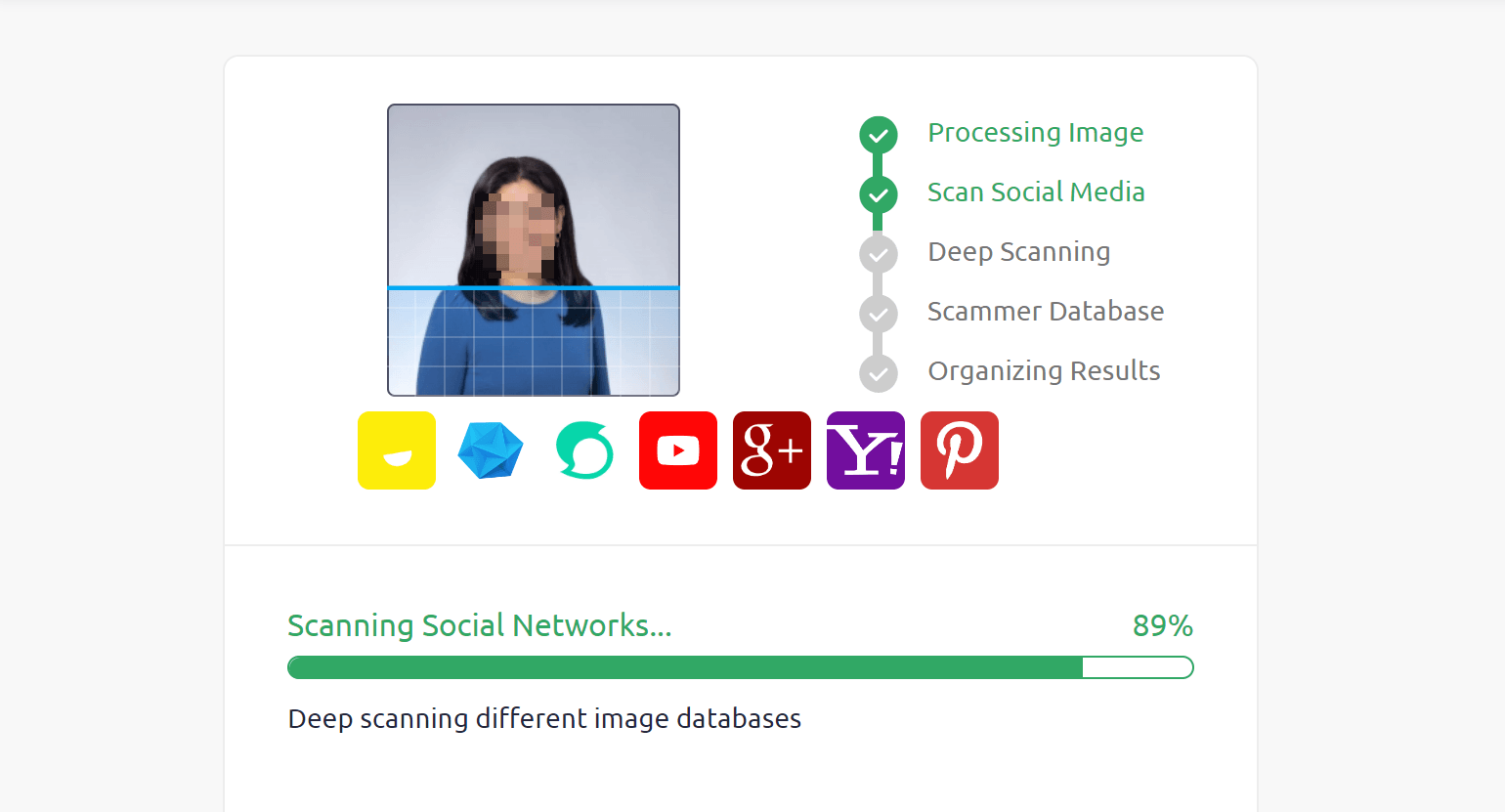
- After processing, you’ll receive a detailed report when available. This report may show you the identity behind the image, along with links to their social media profiles on platforms like Facebook, Instagram, LinkedIn, Tinder, and even Reddit. This can be a big clue if the person has been using this image across multiple sites.
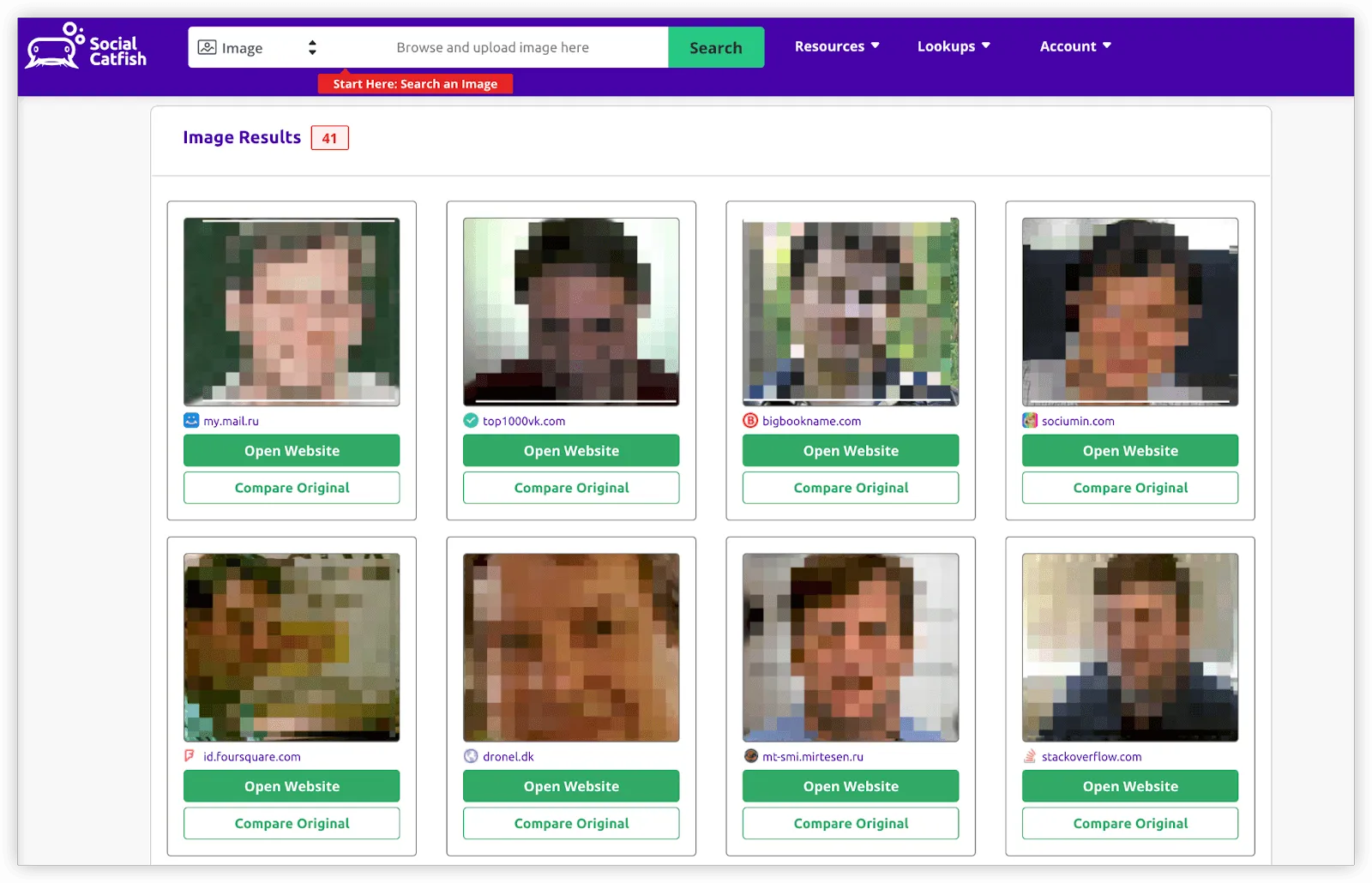
2/ Look up the phone number
Sometimes, catfishers can outsmart the usual reverse image search by testing their own pictures beforehand to ensure they don’t show up in any results. In such cases, moving beyond photos to focus on their phone number could be your next best shot. While names, locations, and other details can be easily faked, phone numbers are often more challenging to disguise because of the information tied to them.
🤔 If you’re wondering if it’s doable to use a phone number to uncover details about the owner, the answer is yes, thanks to online tools designed for this purpose. From our researching, we’ve found two main categories of services that may help you out:
1. Reverse phone number lookup services
For more detailed and reliable information, paid reverse phone lookup services offered by people search engines can be a game-changer. These tools may not only identify the potential owner of a phone number but also compile detailed reports that may include location history, online profiles, and more.
We’ve paid and tested several popular services and found BeenVerified and Intelius to be the most reliable and worth the investment.
✨ BeenVerified
BeenVerified is a reliable people search tool that scans and analyzes billions of phone data points and telecom records to help confirm key details about a person’s identity.
Besides info about the phone number and number owner, its phone number reports often include features like fraud alerts and asset information when available.

If potential owners are identified, you can delve deeper into the details with a full report. This may include other contact information, social media profiles, possible relatives and neighbors, criminal or traffic records, as well as their job and education history.

✨ Intelius
Similarly, Intelius is another strong option for reverse phone lookups, known for gathering data from millions of specialized sources such as public records and social network data. The tool strives to provide as accurate and detailed information as possible about the phone number.
Like BeenVerified, Intelius can also generate in-depth background reports on the phone number owner, sometimes including additional details like voter registration or debt information.
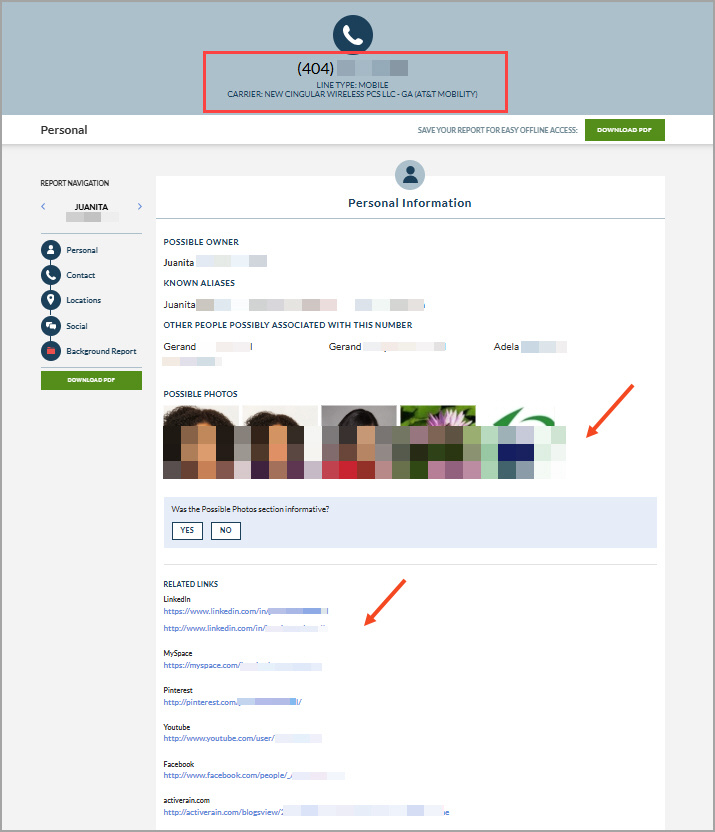
2. Free caller ID lookup tools
Free online tools like FreeCallerLookup and CallerID Test allow you to quickly check basic details, such as the name associated with the phone number and its registered location. While these tools might not always provide up-to-date or accurate data, they can still give you a few useful clues.

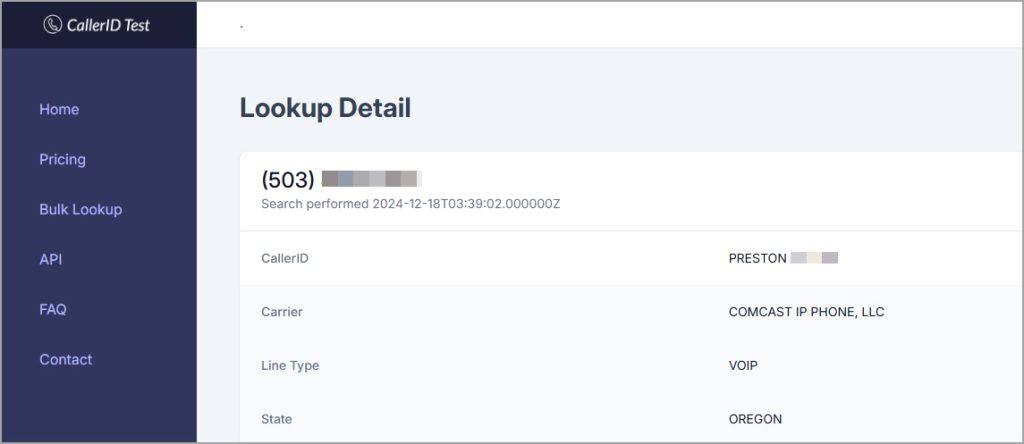
However, these tools typically only provide limited information, and if the phone number is VoIP, they often fail to identify the actual owner.
What to do with the phone number lookup results:
- If these tools successfully identify the phone number owner, the next step is to carefully analyze and cross-check the information and see if it aligns with what the person has claimed —such as their location, name, or even the general context of their story.
- For example, maybe you’ll find that the phone number is registered to a completely different person in another city. If that happens, you should consider it a red flag.
- Also, if the carrier is the kind of provider that offers VoIP services(notoriously hard to trace) such as Bandwidth or Onvoy, and the person happens to be asking you for money, that could indicate you’re interacting with a scammer.
💡 If you’re particularly interested in verifying someone’s marital status to see if they’re married, there is a people search tool called Spokeo that can sometimes provide this information. It’s worth giving it a try to gain any additional insights that could confirm or contradict what you’ve been told.
This method works a bit like running a background report using a phone number to verify someone’s information. But if you want a more direct approach, you could always try calling them from an unfamiliar number, pretending you’re trying to reach someone else. See if they respond with a name you recognize—or one you don’t.
But for some, this may feel a bit awkward. So reverse-searching the phone number could be a better option. However, if the search doesn’t turn up any helpful results, that’s also possible as no tool is perfect. Don’t worry—there are still more tricks up your sleeve. Keep reading for additional methods.
3/ Find IP address with tracking links
Besides using photos and phone numbers to verify someone’s identity, their IP address can also provide some clues. Specifically, it can help confirm whether they are truthful about their claimed location. Think of it like a digital breadcrumb—it may reveal the general area their device is in, like the country, city, and approximate coordinates.
One easier way to find an IP address is by using a tracking link. While it may sound technical, it’s actually quite simple and doesn’t require advanced skills.
Here’s how you can do it:
- Prepare an original link: Find a link that they’re likely to click on or is relevant to the conversation, such as an interesting image, a viral TikTok video, or a news article.

- Generate a tracking link: Use an IP sniffing tool like Grabify or IP Logger. Then paste the original link into the tool, and it will create a new URL capable of tracking IP addresses.

- Make it look normal: Many IP tracking tools include a link-shortening feature. Use this to make the tracking link appear more standard and less suspicious.
- Send the link: Share the link with the person in question. Once they click it, you may be able to retrieve their IP address and check their approximate location in the tool.
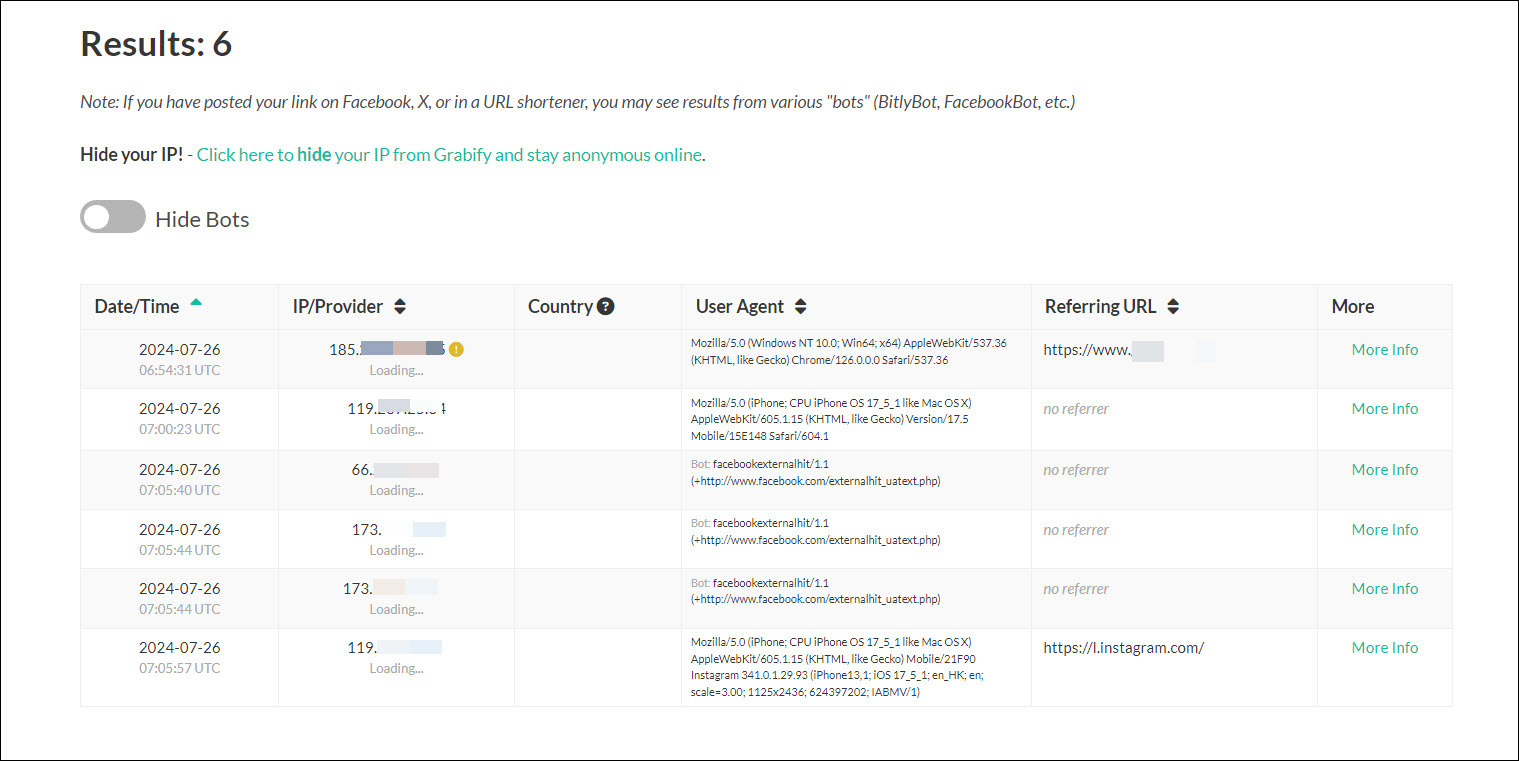
Limitations:
While using tracking links to obtain someone’s IP address can be a clever way to verify their location, it’s not without its limitations:
- One of the biggest hurdles is if the person you’re tracking uses a VPN or proxy server. In such cases, the IP address you capture will point to the location of the VPN server, not their actual physical location. For example, someone in Asia could appear to be in New York. Therefore you should take the results with a grain of salt when you take this way to verify.
- And even if they’re not using a VPN, the location data you get from an IP address is typically approximate—it might only narrow it down to a city or region and could still have an error margin of a few kilometers.
- This method only works when the person clicks on your tracking link. If they’re particularly cautious or tech-savvy, they may avoid clicking suspicious-looking links. This is why tools like Grabify allow you to disguise the link with a shortener, but even then, success depends on their willingness to engage.
4/ Email & Username search
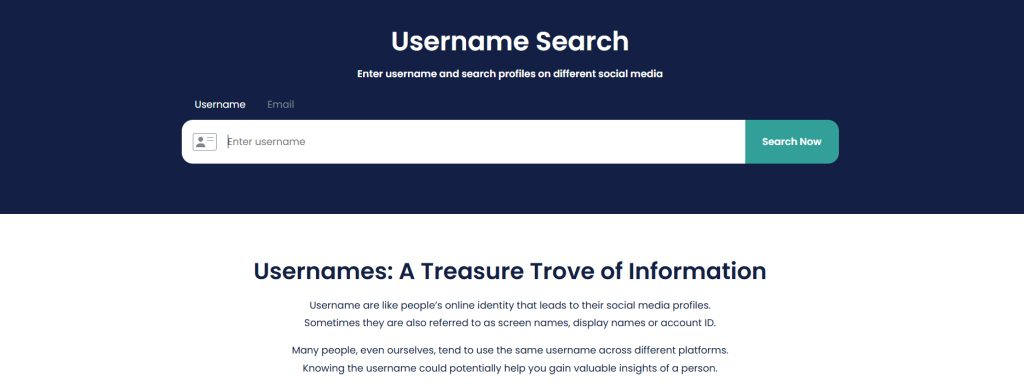
In some cases, email addresses and usernames could be useful clues to uncover more about someone’s online identity.
- For email addresses, you can reverse-search them through tools like BeenVerified or Spokeo mentioned above to find details such as associated social media profiles and location history. If you’re looking for a free option, Epieos is a solid choice, though the information may be more limited.
- Additionally, many people use the same username across different platforms. So running a username search may sometimes lead you to other social media profiles. When performing this search, you can try as many as possible, the usernames you know, a possible one you guess, or the email handle if you have their email address. Then pop them in the username search tools, such as:
5/ Last, some little tricks you can try
So aside from the above methods we’ve talked about, there are a few other tricks that are simple enough to try and could be surprisingly effective.
And the best part? They are all free to let you figure out whether you’re dealing with a catfish.
✨ Try searching for the person’s name or any details they’ve shared on different forums or platforms like TikTok. Sometimes, other people may have encountered the same catfish, and you might find discussions or warnings about them.
✨ You can initiate a transfer through Cash Apps using their phone number (don’t worry, you don’t have to actually send the money!). If the phone number is linked to a Cash App account, you might see the person’s display name, which can be a huge clue.
✨ If you’re into rewards apps like Fetch, you can also sync phone numbers to see what name pops up. It’s another way to get a glimpse into who you’re talking to.
✨ And here’s one more trick: sync their phone number and email address with your social media accounts. Just save the number or email in your phone contacts and sync it with platforms like Facebook or Snapchat. Sometimes, this can bring up profiles you didn’t know about, and you might uncover a few more details to help you figure out who they really are.
What to do if you’ve been scammed by a catfish
Finding out you’ve been catfished isn’t just emotionally draining—it could also come with serious risks, like losing money, facing blackmail, or dealing with identity theft if you’ve shared personal details.
It’s a lot to process, but here’s what you should do right away:
| 📌 Cut them off and stop replying, so that they won’t have chances of getting any more of your information. |
| 📌 If you’ve shared sensitive info, check your accounts for any weird activity, change your passwords ASAP, and turn on two-factor authentication. |
| 📌 Maybe you can share the details on scam-reporting sites like ScamSearch.io or IC3.gov so others can stay informed. |
| 📌 Report their account to the platform, and if they’ve threatened or harassed you, don’t forget to take screenshots as proof. Here are some useful reporting links for popular platforms where catfishers often lurk: Facebook Help, Instagram Help Center, TikTok Safety, Tinder Safety & Reporting, WhatsApp Help Center and so on. |
| 📌 Don’t blame yourself and it’s better to talk to a friend, family member, therapist, or even an online support group where people share similar experiences. |
Final thoughts
Online dating or internet friendships can feel like a safer way to meet people. But sometimes it can also be heartbreaking. When after months or even years of building a connection, find out the person on the other end was never real. That emotional bond, which felt so real, can turn out to be just an illusion.
So when you’re talking to someone you’ve never met in real life, always do a little vibe check. Stay hyper-vigilant about those tiny red flags and trust your gut. And of course, a good old-fashioned video call is always the most effective way to verify someone’s identity. But if that’s not an option, the methods we’ve shared in this post are here to help you dig deeper.
📌 Last, keep in mind that every catfish situation is a little different, and there’s no one-size-fits-all solution. That’s why it’s smart to mix and match these methods to cross-check what you find. The more tools in your detective kit, the better your chances of spotting the truth.



 View all of Evie Gan's posts.
View all of Evie Gan's posts.
